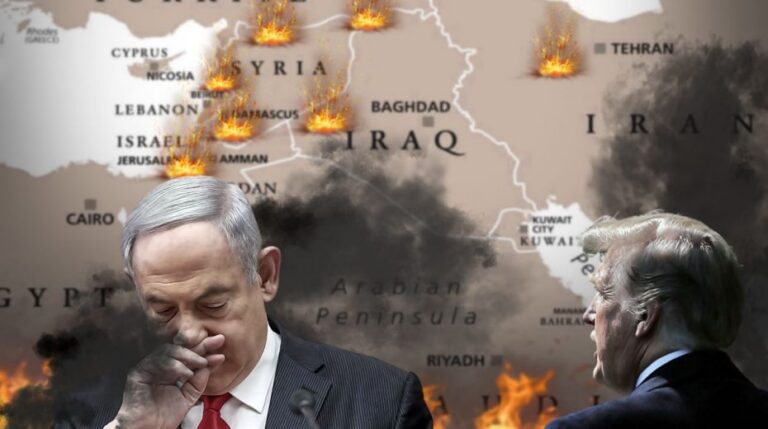
The 10,000 U.S. troops now operating in the Caribbean were sent to interdict drug boats.
However, Venezuelan President Nicolás Maduro’s declaration of an external state of emergency on September 30 has fundamentally altered their mission: they are now up against a military force on full wartime alert, equipped with Russian air defense systems and anti-ship missiles, and supported by what Maduro asserts is a militia exceeding 8 million members.
For U.S. commanders, this shift means every mission and encounter carries the risk of Venezuelan counteraction—a challenge their current deployment is ill-prepared to face.
Russian Missiles and Air Defense Systems Pose Threat to U.S. Navy
While Venezuela cannot rival U.S. military power in a traditional battle, its 123,000-strong armed forces reportedly suffer from serious maintenance issues, with analysts telling The Wall Street Journal that the military is “in shambles.” Experts cited by Breaking Defense suggest their submarines and surface ships are likely nonoperational.
Nevertheless, Venezuela has invested heavily in the most damaging weapons: Russian-made systems including missiles and aircraft specifically designed to challenge U.S. naval and air forces.
The nation fields a minimum of 20 Sukhoi Su-30 MK2 fighter jets armed with Kh-31 “Krypton” anti-ship missiles. The International Institute for Strategic Studies confirms Venezuela possesses both anti-ship and anti-radar versions of the Kh-31 missile—systems that induced U.S. Navy planners in the 1990s to develop countermeasures due to their high speed and sea-skimming flight.
Venezuelan aircraft have already tested U.S. responses; in early September, two Venezuelan F-16s performed close passes near the USS Jason Dunham in international waters, a maneuver Pentagon officials called “highly provocative” and a “show of force.” The U.S. warned Venezuela against further interference with counternarcotics missions.
On land, Venezuela has deployed S-125 Pechora-2M, Buk-M2E, and thousands of Igla-S surface-to-air missile units protecting oil facilities, radar installations, and naval avenues. Though somewhat outdated, these weapons still pose significant threats to helicopters and other low-flying aircraft essential for U.S. operations beyond long-range strikes.
Most notably, Venezuela has installed Russian radar networks alongside Chinese communication relays, creating what military analysts describe as a contested electromagnetic environment, per Army Recognition. This limits the ability of U.S. aircraft and ships to operate unnoticed or maintain reliable communications without jamming interference.

Venezuela Activates Millions in Militia for Territorial Defense
Maduro asserts that over 8 million militia members have been mobilized, though experts question both this figure and the training standards of those forces. Even more conservative estimates point to several million, effectively establishing a territorial defense network covering at least 20 of Venezuela’s 23 states.
The Bolivarian Militia is not intended for conventional warfare against U.S. forces. Instead, military strategists have equipped militia units with anti-tank weapons, RPGs, and locally refurbished armored vehicles. Many militia members, often middle-aged and not necessarily in prime physical condition, have been observed carrying a variety of firearms ranging from AK models to older semi-automatic rifles.
The plan aims to impose significant resistance on any U.S. ground incursion through urban environments and difficult terrain—employing asymmetric tactics reminiscent of those encountered by American troops in Iraq and Afghanistan.
Venezuela has recently held military drills tailored to showcase this approach. In late September, exercises took place in Caracas shantytowns to train forces on exploiting urban settings against superior adversaries. The intent is to warn U.S. commanders that even with the ability to conduct long-range strikes, any ground operation would devolve into urban combat against irregular troops with home-field advantages.
US Caribbean Deployment Lacks Forces for Full-Scale Venezuela Operations
The U.S. has assembled a powerful naval and air presence: eight Navy vessels including multiple destroyers, the cruiser USS Lake Erie, the amphibious assault ship USS Iwo Jima, a nuclear attack submarine, plus F-35 fighters stationed in Puerto Rico and B-52 bombers which recently conducted show-of-force flights near Venezuela’s coast, according to U.S. Southern Command.
Within the region, Tomahawk missile-capable ships and subs patrol near Puerto Rico and southern Caribbean waters, enabling strikes deep inside Venezuela without entering its territorial sea. These platforms offer precision submarine launches and F-35 overflights in areas where Venezuela’s outdated radar may not give effective early warning.
However, analysts at the Center for Strategic and International Studies caution that this task force lacks the troop numbers and logistical capacity to sustain sustained ground combat operations across Venezuela’s extensive territory. The 10,000 personnel include Marines aboard ships and forces stationed in Puerto Rico but do not encompass the necessary supply lines, continental bases, or support units for prolonged campaigns.
This contingent was originally intended for counternarcotics interdiction rather than fighting an enemy equipped with anti-ship missiles and integrated air defenses. Coast Guard teams on Navy vessels can board suspect vessels, and Marines can carry out board, search, and seizure missions. Yet neither are fully prepared to operate continually under threats posed by Kh-31 missile strikes or coordinated air-defense fire.
Any mission extending beyond drug interdiction would require additional reinforcements and logistical backing from units stationed on the U.S. mainland.

Venezuelan Military Exercises Increase Risk of Accidental Conflict
Under the cover of his emergency decree, Maduro has militarized civilian ports, allowing deployment of mobile air defense units and anti-ship missiles. Daily military drills place forces close to the coast, while Venezuelan jets persistently operate near U.S. vessels.
In early October, helicopters from the elite 160th Special Operations Aviation Regiment were spotted flying within 90 miles of Venezuela’s coastline, as reported by The Washington Post.
Although none of these acts currently justify a full-scale U.S. military response, they heighten the likelihood of an unintended confrontation escalating quickly.
A routine Venezuelan jet flyby could be mistaken for an attack, a U.S. ship’s defensive systems might engage an approaching aircraft automatically, or a Venezuelan mobile missile battery could target a U.S. plane, potentially triggering retaliatory strikes inside Venezuela. Such a scenario would require forces and supplies the U.S. currently lacks in the region.
The recent capture of two survivors after a strike on an alleged drug-smuggling vessel further illustrates operational complexities. On Saturday, Trump announced that these survivors—from Ecuador and Colombia—are being repatriated for prosecution following legal scrutiny over the U.S. military’s authority to detain them.
Meanwhile, Adm. Alvin Holsey of U.S. Southern Command, the officer directing these operations, announced his retirement after only one year. Sources told CNN that tensions with Defense Secretary Pete Hegseth focused on concerns about the tempo and legality of operations—suggesting even the regional commander questioned the missions assigned to his troops.
Adding complexity, Trump confirmed on October 15 that he authorized the CIA to carry out covert activities inside Venezuela, citing the pressures from migration and narcotics flows as justification. Asked if the CIA had authority to target Maduro directly, Trump called it “a ridiculous question for me to answer” but added, “I think Venezuela is feeling heat.”

What Happens Next?
U.S. forces operating in the Caribbean now confront a challenging environment: they are applying law enforcement-focused rules while facing an opponent preparing for wartime conditions. Although possessing overwhelming firepower, they have limited logistical capacity for sustained campaigns. They can launch strikes from afar but lack the manpower for direct incursions within Venezuelan borders—all while Venezuela deploys weapons optimized to inflict heavy casualties on American naval and air units.
The Pentagon emphasizes that these operations remain centered on counternarcotics, despite confirmed CIA covert actions, Navy bombings of vessels off Venezuela’s coast, and nearby special forces deployments. Yet each Venezuelan military exercise, fighter jet patrol, and militia mobilization blurs the distinction. U.S. troops are not at war with Venezuela—but they are positioned as if they must prepare to fight, confronting defenses designed to make such a conflict costly.
Original article: www.military.com




